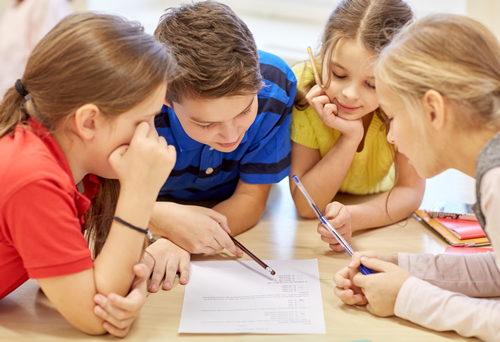Teaching any subject to any student is often a challenging task.
When charged with reaching ELL students, we must be especially cognizant of the specific set of challenges intrinsic to the ELL student and how best to rise to those challenges.
Strategies that might be tried and true in reaching your native speakers could very likely be lost on your ELL students. Explicit and effective ELL strategies must be utilized in order for your students to gain a true understanding of the content being taught and the language associated with that content.
1. Purposeful Planning
This one is pretty obvious. Planning is always important.
However, when planning for your ELL students, there are some definitive guidelines that should be followed. Like every good lesson, ELL or not, there should always be:
- Content objectives: For instance, if you’re teaching about the solar system, you must determine what exactly it is that you want to teach. You decide you want to teach how many miles each planet is from the sun. This would be your content objective.
- Language objectives: This step in the planning process is key when preparing for the ELL student. They aren’t likely to be as familiar with the vocabulary associated with solar system as a native speaker. Specific vocabulary must be determined and explicitly taught.
It can be fairly simple to determine which words might be appropriate for your language objectives. Just choose words that are significant to the lesson being taught. In the above example you might select the words solar system, miles and planet to explicitly teach.
2. Utilizing Visuals
Visuals are universal. That’s what makes them such a great tool for use with your ELL students.
Visuals can be used in many capacities. It can be something as simple as a photograph or picture provided along with your vocabulary words, or something as involved as a whole theme planned around authentic video materials such as those from the vast FluentU library!
FluentU takes real-world videos—like music videos, movie trailers, news and inspiring talks—and turns them into personalized language learning lessons.
Be sure to request a free trial of the FluentU program and explore all the other incredible ways FluentU can bring native visuals and English language to your class.
Though we may not always think of it, visuals can include things like graphs, maps and graphic organizers.
3. Scaffolding
Learning how to ride a bike was always a challenge for me. Several well-meant attempts were made in my childhood to help me attain this skill but, for some reason, I just couldn’t do it. I was finally able to conquer this complex task at the age of 26 with the help from my then-boyfriend-now-husband.
He took me to an abandoned parking lot and began by riding all around me. I watched as he slowly steadied himself and then built up speed. He made several passes through the parking lot using slow, exaggerated moves. It was then my turn. I hopped up on the seat and, just like a 6 year old, I performed the movements with his help. He guided me with his hand on the seat behind me while I pushed the pedals and worked the steering. After several minutes of this, he let go. It was all me. I had successfully learned how to ride a bike.
This I do, We do, You do theory of teaching is called scaffolding.
The term “scaffolding” was originally coined by psychologist Jerome Bruner in the mid-seventies. It really just refers to the belief that, in the beginning stages of instruction, a student will need more support to be successful. As the skill level is strengthened, the supports can be methodically eliminated until the student is comfortably succeeding on their own.
Scaffolding is effective with ELL students because it introduces skills and tasks in a slow and manageable manner.
It’s easy to become overwhelmed when learning something new. This can lead to a lack of confidence which could eventually shut down the learning, resulting in a frustrating and unsuccessful experience for everyone. Through the use of scaffolding, a student builds confidence while mastering a skill.
Visuals can also be used as a form of scaffolding. When introducing and learning new vocabulary, it’s beyond helpful to have a visual representation of the new words. As the students become more familiar with the language, the visuals can be removed. Soon they’ll be recognizing words and reading them all on their own.
There are many ways to use scaffolding in the ELL classroom. The best method for your classroom can be determined by assessing the specific needs and goals of your students and the exact content you’ll be teaching.
4. Working Together
Cooperative learning activities are always beneficial in the ELL classroom. Working with peers creates a low-pressure, confidence-building environment optimal for progress.
The peer interactions essential to cooperative learning help to develop language in a natural manner. Small groups of peers provide a safe setting for practicing language. Students learn the nuances of language through simple conversations with friends. Native speakers or more fluent peers are excellent models for ELLs who may be just learning the language.
Cooperative learning can take on many different forms. Interactive learning games are always fun and beneficial ways to interact with peers. It can also be helpful to use peer review activities. Corrections or revisions are often easier to take coming from a friend rather than a teacher.
Cooperative learning activities can vary greatly in content and objective. There are lots of great online resources for planning cooperative learning activities that can be tailored to best meet the needs of your students.





No comments:
Post a Comment